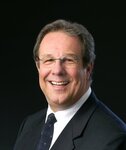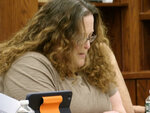


Financial adviser Dr. Rick Timbs gave advice to the Rondout Valley Board of Education at its June 13 meeting in the district office and began by saying, “I want to thank Alyssa and Joe Morgan for all their help in delivering this plan. Transportation is a huge expense, and you’ve got a lot of kids to run around as well as special ed runs, athletic runs, so your aid has gone up, but I believe it will ebb out.”
New York state’s fiscal year 2022-2023 budget established a nation-leading commitment for all new school buses purchased to be zero emission by 2027 and all school buses in operation to be electric by 2035. The last annual ASBO conference (Association of School Business Officials of New York) focused on the state’s new zero-emission school bus. The event was held on Oct. 4, 2022, in partnership with the Rockefeller Institute of Government.
Timbs has investigated the school bus zero emission mandate by 2035, and said that each electric bus will cost closer to $400,000 versus $150,000. As a firefighter, Timbs knows that those buses burn at 3,000 degrees so you cannot park them close to each other, which will require bigger buildings for garaging. They need more protection and should not be parked outside. He noted that the staff must be trained to work with zero-emission buses. Some parts will no longer work. “You are going to need extra storage space for the extra batteries,” he said.
“The state wants you to amortize the cost of the electric buses over 12 years. The problem is the buses are only going to last eight to nine years. By the time you get to 2035 the buses you already have may no longer be feasible. … To me, this is a good idea that was not fully thought out. This is a California model where they have rolling blackouts just trying to do what they are doing now. Meanwhile New York is closing nuclear power plants. The power plants that are going to be used to power your buses are diesel fired,” Timbs continued.
“I have clients who have applied for the grant you were awarded but were turned down. Something tells me that in a few years, you’ll be turned down and they’ll get the grant. Because there is not enough money. … There are 50,000 buses that will need to be purchased in New York state. I went to every vendor in the (recent conference), and not one of them could deliver to me 20 buses next year. Fifty thousand buses needed at the same time. All the capital projects going in at the same time. This is not going to work. I was meeting with a district the other day, and they believe this is going to break their budget in half.
“This is going to be very expensive. It’s not that this may not be worthy, it’s just that this may not be the plan. Tell you what, go down to your electric company and tell them you are going to need enough electricity for 30 buses, or 35 with visiting teams, and ask them what year it is going to be there.”
Regarding the restricted fund balances, Timbs said, “You do have a workers’ compensation reserve of about $250,000. The only thing I would say about this is that it is adequately funded. As a financial adviser, I’m glad to see that money in there. The comptroller may think it is overfunded, but I must say, technically speaking, workers’ comp claims could come in at any time and you are trying to protect yourself. The thing I like about the workers’ compensation reserve is that should the district need some money for some emergency purpose, at any board meeting they could transfer money out of this reserve into another reserve, or into the general fund, so it is nice to have a workers’ comp reserve.
“You have an unemployment reserve. This one here is also a good one to have. People come and go and you have to pay the unemployment benefits, depending on what goes on. I would probably guess that the comptroller would believe that this is overfunded a bit, and you could adjust this. I wouldn’t move all of it, but maybe some of it.”
Timbs said that the retirement funds are really done well, with a gentle increase each year. The reserve for employee benefits is less easily transferred. He said auditors could give guidance on if it could be reduced any.
Pointing to the capital reserve line, Timbs said, “Here is the shining star. Somebody … this district has had its thinking cap on. I like the use of fund balance to build a capital reserve. Matter of fact, your debt service and your state aid for capital renovations are dropping off in a few years, and this reserve will come in handy as you plan another capital project. Having money in here is an excellent way to offset taxpayer impact. This is a jewel right here, this is fantastic, so kudos to the board and central office for doing this. This is evidence of excellent planning.”
With voter approval, capital reserves can also be made for vehicles, pickup trucks, snow ploughs, classroom furniture and technology.
The workers’ comp, unemployment and retirement reserves can also be shifted to other needs. The reserve for employee benefits is just right, not too much, but not too little either.
“The district has really kept up with capital projects,” Timbs said. “I am impressed with these reserves so far. It is evidence of long-range planning by the district. The comptroller may have a problem with a few things that we can move around, but I’ve got to tell you this is one of the best plans I’ve seen, so kudos.”
State aid is the largest number on the page but is only increasing at 3% because other districts with more poverty are being prioritized.
“The cautionary tale here is to let the district know that over time there are going to be huge constraints on your revenue,” Timbs said. “They are simply not going to grow at the volume that you would like. Look at it this way, if your major aid category, is huge by far, and if inflation continues to move at 4 or 5%, labor costs go up, inflation goes up, the price of materials goes up, this will put pressure on your revenue and ultimately, I believe, pressure on your budget.”
Building aid is going up because of previous capital projects, but will end in a few years. Timbs said that the aid from the last 12 to 13 years is going to drop off like a rock. The stability for the tax cap will be gone, unless the district fills the aid ceiling by having another project.
“My suggestion is to look at a capital project down the line, maybe start to have discussions this summer about it,” Timbs said.
The pre-K incentive grant is considered seed money and does not even cover cost of startup. Going forward, all expenses will fall to the district.
In the five-year budget plan, general support salaries are projected to increase 21.2% by 2027. The cost of instruction is projected to go up by 14.8%.
In districts across the state, the expense of students with special needs is increasing rapidly and is having an effect on budget, so instructional-other expense is projected to increase by 39.8%, from $6.5 million to over $9 million by 2027.
Transportation is projected to increase by 32%.
“I’m hopeful that these two numbers hold. What I’m a little concerned about here is that the contractors will start buying zero-emission buses and transfer the cost on to you here. We do have a pretty good increase in 2024-25 and another one in 2026, but we don’t know if it will be enough, so that is something we have to keep an eye on over time.”
Over five years, expense for retirement is going up 7% and Social Security is going up 15%.
“What really has me concerned after retirement is health insurance, looking like 35.6%. I’ve got to tell you I have some districts at 60%, and some at 20%, but none under 20%. The phenomenon that’s going on with health insurance is that whether you are self-insured or you belong to consortia, you’ve got a separate plan.”
During the Covid pandemic nothing was going on except Covid. Since that time, health insurance plans are going to have to cover all the procedures that were put off. The cost of pharmaceuticals and procedures is also going up.
The BOCES capital project over the next few years will bring an increase in aid, but not enough to cover it, so that is additional expense in the budget.
Timbs pointed out the fact that the tax levy was below the tax cap this year was great for taxpayers, but will kind of freeze that revenue stream for next few years.
In summary, Timbs made the following recommendation. First, reexamine 2023-24 fund balance carryover and reallocations, try to cut expenses wherever possible without impacting program delivery, maybe not replace a retiree if student count is low, for example. The budget could be examined during the current year to be aware of both budget revenue and expenses for estimate versus actual. Reevaluate purchases. Monitor labor scarcity issues, and develop a long-range, thoughtful plan to prepare for a possible state funding cliff 2024-25 and 2025-26.
The costs associated with contracted zero-emission bus mandate will be expensive. The district needs to research costs for buses and transportation facilities and develop a financial plan and timeline.
Lastly, Timbs said the district must monitor the tax cap and note growing use of appropriated fund balance in the years after next year for three years in a row. The district needs to be aware of super majority tax levy limit implications.
Bus mandate information from: The Rockefeller Institute of Government and NYSERDA New York.gov websites